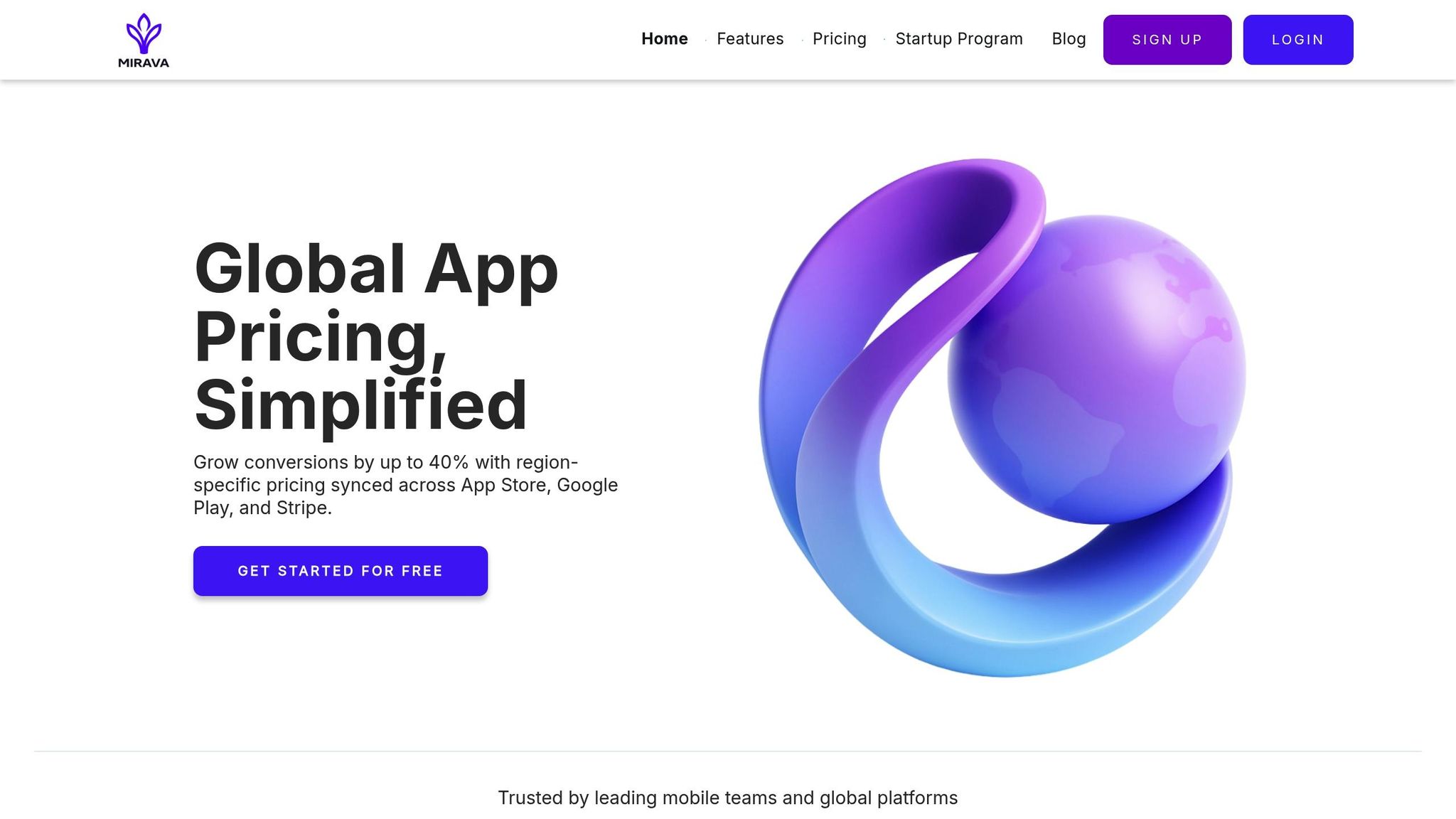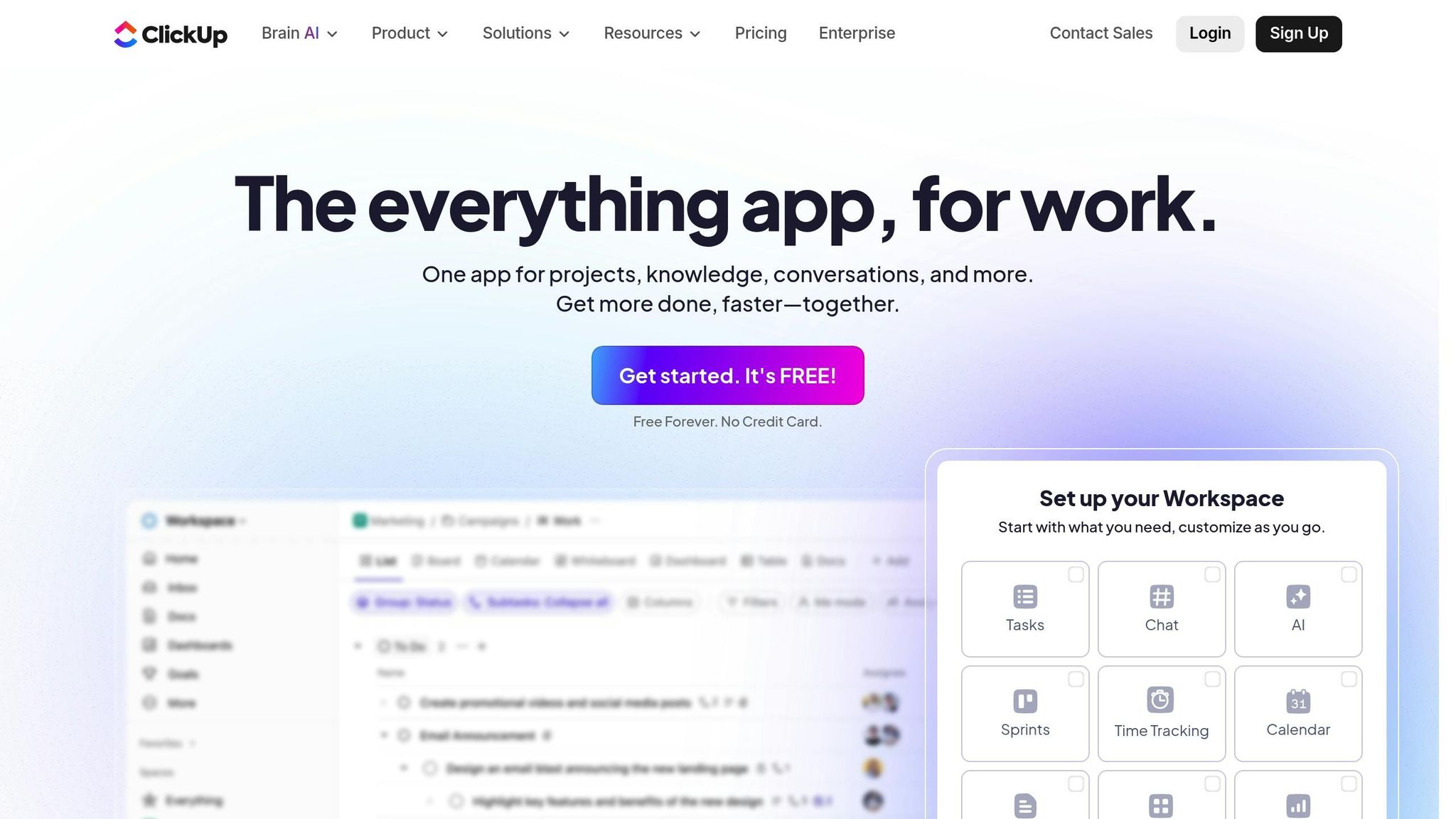Choosing the right pricing tool for your mobile app can significantly impact your revenue. The article compares five tools, but Mirava stands out as the only one specifically designed for mobile app developers. It offers features like regional pricing, purchasing power parity (PPP) adjustments, batch updates, and detailed analytics. Other tools, such as ClickUp, Pricefx, Competera, and Prisync, lack mobile app-specific functionalities, making them less effective for developers.
| Tool | Mobile App Focus | Key Features | Best For |
|---|---|---|---|
| Mirava | Yes | Regional pricing, PPP, analytics | Developers of all levels |
| ClickUp | No | General project management | Task organization |
| Pricefx | No | Enterprise pricing strategies | Large-scale enterprises |
| Competera | No | Competitive intelligence | Retail and e-commerce |
| Prisync | No | Competitor price tracking | E-commerce businesses |
For mobile app developers, Mirava is the best choice, offering practical tools to manage global pricing and maximize revenue.

Mirava is designed specifically for mobile app developers looking to fine-tune their pricing strategies across iOS, Android, and web platforms. It tackles the tricky challenge of balancing competitive pricing with maximizing revenue in diverse global markets.
One standout feature is customized pricing by country, which goes beyond simple currency conversion. Mirava's dashboard allows developers to manage pricing across platforms with ease - offering a one-click price update. This functionality helps developers quickly adjust to market changes without needing to navigate multiple consoles.
These tools are especially useful for adapting to shifting market demands, ensuring that pricing aligns with regional purchasing trends.
Mirava takes local purchasing power into account with its advanced conversion tools. This ensures that app pricing is appropriate for both emerging and developed markets, preventing underpricing or overpricing in various economies.
By aligning prices with local economic conditions, developers can improve user acquisition and retention across a wide range of regions.
For developers managing multiple apps, Mirava simplifies the process with batch pricing updates and testing tools. These features allow for experimenting with different price points and automating adjustments, saving countless hours of manual work. The Professional plan, available for $49 per month, includes these automation tools, making it a time-saver for busy developers.
Mirava also provides detailed analytics to help developers optimize subscriptions and in-app purchases. The Agency plan offers advanced analytics and custom price modeling, catering to larger publishers who require deeper insights to drive their pricing strategies.
Mirava offers three pricing tiers, each tailored to different levels of developer needs:
| Plan | Price | Key Features | Best For |
|---|---|---|---|
| Basic | Free | Manage up to 2 apps, basic price conversion, manual updates | Indie developers just starting out |
| Professional | $49/month | Advanced conversion, purchasing power parity (PPP) adjustment, batch updates | Growing developers with multiple apps |
| Agency | Contact sales | Unlimited apps, advanced analytics, API access, dedicated support | Large publishers with complex requirements |
The free Basic plan is ideal for indie developers who want to explore the platform's core features with up to two apps. The Professional plan removes app limits and adds automation tools, making it perfect for developers managing multiple projects. For enterprises, the Agency plan offers unlimited scalability, API access, and dedicated support to handle more complex needs.

ClickUp is a project management tool that doesn’t include features specifically designed for mobile app pricing optimization. While some developers might adapt its organizational tools for basic pricing workflows, it doesn’t offer dedicated functionalities like advanced analytics, automation, or integrations tailored to mobile app pricing.
As a result, ClickUp may not be the best fit for developers looking for specialized tools to refine their mobile app pricing strategies.

Pricefx stands out as an enterprise pricing platform, designed specifically for large-scale pricing strategies. However, it doesn't emphasize mobile app-specific features, such as regional pricing or app analytics, which could be a drawback for mobile-focused projects.
Unlike general project management tools that lack robust pricing capabilities, Pricefx is built for enterprises. That said, developers should carefully evaluate whether its enterprise-oriented approach aligns with their specific needs for mobile app pricing.

Competera is a platform designed for competitive intelligence and pricing optimization. However, it doesn't cater specifically to the regional pricing needs of mobile app development. Pricing mobile apps accurately requires tools that can adapt to regional differences - a capability where Competera appears to fall short.
Competera offers analytics tools aimed at competitive intelligence and market trends. That said, it lacks comprehensive support for mobile app pricing factors like regional purchasing power or app store-specific dynamics. These elements are crucial for developers who want to fine-tune their app pricing strategies.
Information about Competera's scalability and pricing is sparse. The platform focuses on broad pricing optimization, which may not align with the unique demands of mobile app pricing.

Prisync takes a slightly different angle compared to other tools. It focuses on monitoring competitor pricing across various markets, but it falls short when it comes to features specifically designed for optimizing mobile app pricing.
For instance, Prisync doesn't include advanced analytics, detailed reporting, or the ability to adjust prices based on regional factors. These are crucial for navigating app store algorithms, addressing differences in global purchasing power, and adapting to local economic conditions. Instead, Prisync's pricing model is more aligned with e-commerce businesses, basing costs on the number of products and competitors rather than offering insights tailored to app store pricing strategies.
While Prisync might work well for general competitive price tracking, mobile app developers need tools that can handle the unique challenges of app store pricing and regional market variations.
Building on the earlier discussion of challenges and solutions, this comparison highlights how a specialized tool like Mirava stands out in tackling mobile app pricing issues compared to more general-purpose platforms.
When it comes to optimizing mobile app pricing, Mirava provides a solution tailored specifically for this purpose. Unlike generic project management tools or large-scale enterprise platforms that often overlook mobile-specific needs, Mirava’s targeted design helps developers save time and boost revenue. It ensures app prices stay competitive and properly localized for markets around the world - something crucial in today’s global app economy.
Mirava also offers flexibility through tiered plans, catering to a wide range of developers. Whether you’re an indie developer just starting out or an enterprise publisher needing advanced analytics and API integrations, Mirava’s approach addresses pricing challenges efficiently, making it a daily ally for mobile app developers navigating the complexities of global markets.
Understanding how specialized tools handle the complexities of regional pricing is key to shaping your market success. The pricing tool you choose can directly influence your revenue potential in today’s highly competitive mobile landscape.
Mirava offers flexible plans to suit various needs: a free plan designed for new developers, a $49/month option for those scaling their operations, and custom plans tailored for enterprises that require advanced analytics and API integrations.
No matter where you are in your journey - whether launching your first app or overseeing a portfolio of successful products - the right pricing tool ensures you’re not losing revenue to poorly optimized prices or outdated conversion rates.
Pricing isn’t just about currency conversion. It’s about understanding local purchasing power, market competition, and user behavior in different regions. Choose a tool that grows with your business and meets the ever-changing demands of global markets.
Mirava is a game-changer for mobile app developers, offering tools that make pricing for global markets a breeze. With features like automated regional pricing, Purchasing Power Parity (PPP) adjustments, and price localization, it ensures your app's pricing is both competitive and region-specific.
Key tools such as auto-tier mapping, multi-region rollouts, and price simulations help streamline the process, making it easier to expand into international markets while boosting revenue potential.
On top of that, Mirava takes the headache out of tax handling and provides visual dashboards to help you analyze and refine your pricing strategies. These features let developers concentrate on growing their apps, confident that their pricing adapts seamlessly to different regions.
Mirava helps developers fine-tune their app pricing by aligning it with local economic conditions. By setting prices that reflect regional purchasing power, developers can keep their apps affordable for users around the globe while still optimizing their profits.
This approach doesn’t just make apps more accessible to a broader audience - it also gives developers a competitive edge in international markets. Mirava enables you to strike the perfect balance between affordability and revenue, ensuring your app meets the needs of users in every region.
Mirava offers pricing plans tailored to developers at every stage of their journey. For startups, entry-level plans provide the basic tools needed to kick things off. As apps gain traction, mid-tier plans introduce features like regional pricing adjustments and platform-specific customization. For enterprise-level developers, advanced plans include robust tools designed for global scaling and revenue maximization.
These options cater to a variety of budgets and technical requirements, ensuring developers can smoothly transition from launch to international growth.